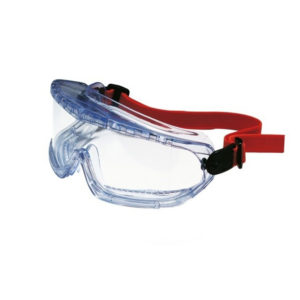In hazardous working conditions, your eyes are prone to accidents and injuries. Thankfully, there are eye protection safety glasses to work comfortably in these conditions. But, unfortunately, the use of glasses is surrounded by many misconceptions. As a result, people don’t use them.
In this post, we will shed light on these misconceptions and the facts related to them.
Myth 1: Safety Glasses Are Uncomfortable and Restrictive
People feel that wearing safety glasses for longer hours is uncomfortable. Also, they restrict the movements. But, the fact is that modern eye protection safety glasses are ergonomically built. They are lightweight as well.
With advancements in design and materials, high-quality safety glasses move seamlessly with you, enabling unrestricted motion. Options with adjustable nose pads and lens inclination allow a personalized fit for all-day wearability. Seek out safety glasses with cushioned temples and nose pieces to maximize comfort.
Myth 2: Safety Glasses Impair Vision
Contrary to assumptions, premium safety glasses are engineered to provide maximum visual clarity and accuracy. With treatments to reduce fogging, glare, and distortions, these glasses enhance your vision instead of impeding it.
Premium lenses help sharpen surroundings, boost depth perception, and improve visibility in dimly lit spaces. This amplified vision equips you to maneuver your environment cautiously. Select safety glasses with impact-resistant polycarbonate lenses for robust protection without sacrificing optics.
Myth 3: Safety Glasses Are Only for High-Risk Jobs
You may incorrectly believe that safety glasses are exclusive to tradespeople in hazardous sites. However, statistics show that nearly three-quarters of eye accidents occur off the job. Safety glasses safeguard against injuries while using power tools, doing repairs, pursuing hobbies, playing sports, and other everyday activities.
Making safety glasses part of your lifestyle is key to preventing blinding or debilitating eye trauma. Keep a pair handy while doing yard work, woodwork, or home remodeling.
Myth 4: Prescription Glasses Offer Adequate Protection
Prescription eyeglasses correct vision but lack specialized impact and splash protection. Industrial-grade safety glasses, however, meet accredited testing benchmarks for shielding eyes against projectiles, chemicals, dust, sparks, and more.
For comprehensive protection tailored to your workplace hazards, specialized glasses designed to recognize safety standards are non-negotiable. If you require vision correction, look into prescription safety glasses optimized for your occupation.
Myth 5: Safety Glasses Are One-Size-Fits-All
Believing one safety glasses style suits all is misleading and risky. Faces vary in shape and size, so ill-fitting eyewear leaves gaps that endanger eyes. For optimal protection and comfort, finding equipment matched to your exact facial dimensions is vital.
Properly shaped frames that seal snugly to your temples, brow, and cheeks provide robust barriers against workplace eye hazards. Loose glasses enable debris penetration from the sides. Take time to identify custom-fit safety eyewear aligned to your unique attributes.
Bottom Line
Overlooking key advantages of eye protection safety glasses can needlessly expose your vision to preventable risks. When chosen with your safety priorities and facial measurements in mind, safety eyewear empowers you to handle occupational and everyday hazards while maintaining clarity.
Making these specialized glasses an indispensable component of your safety toolkit helps secure your short-term and long-term vision. Invest in high-quality, properly-fitted safety glasses suited to your hazards and replace them promptly when damaged. Your eyesight is precious – protect it accordingly.











